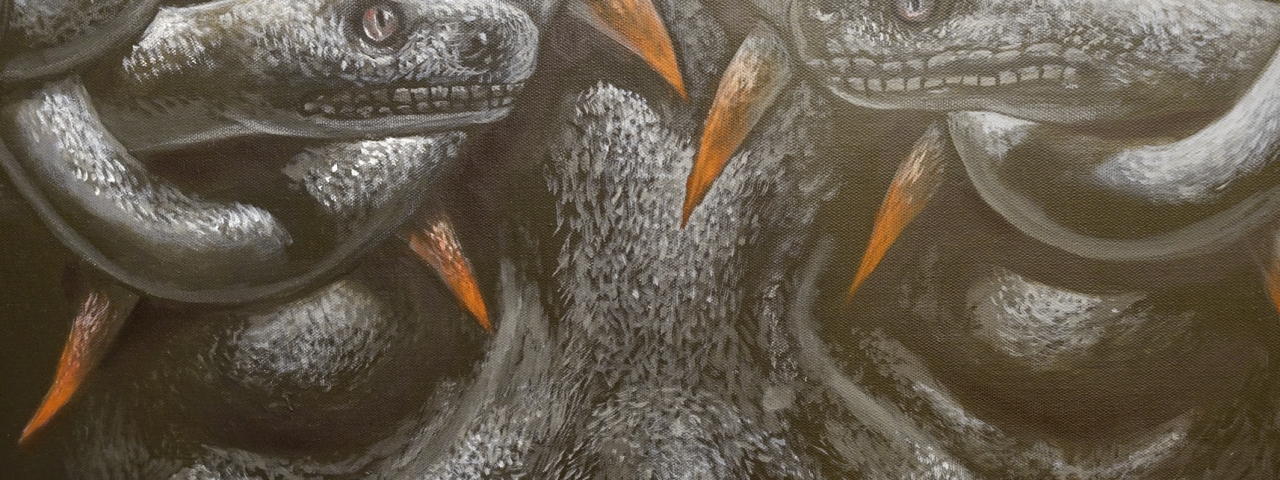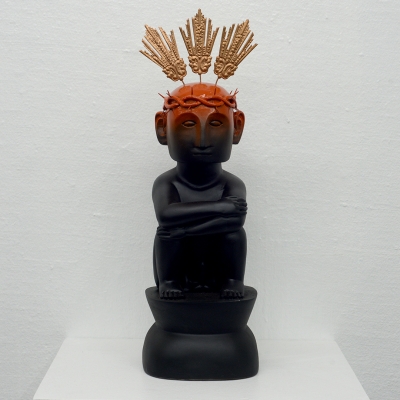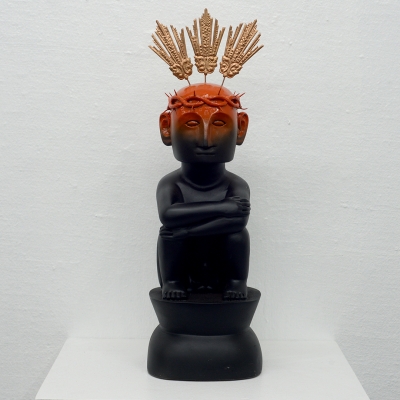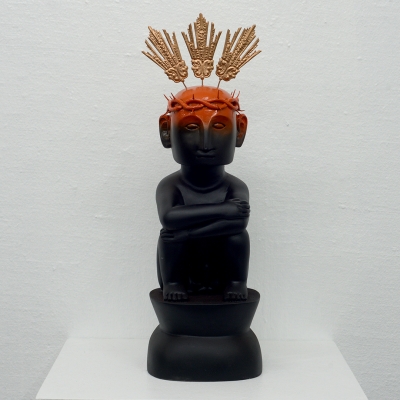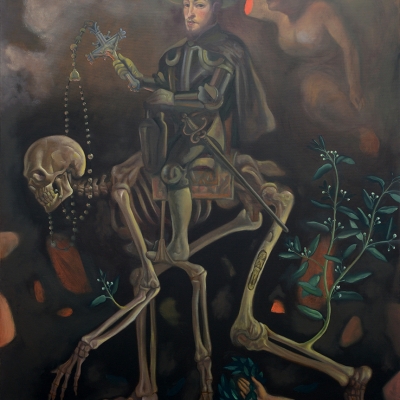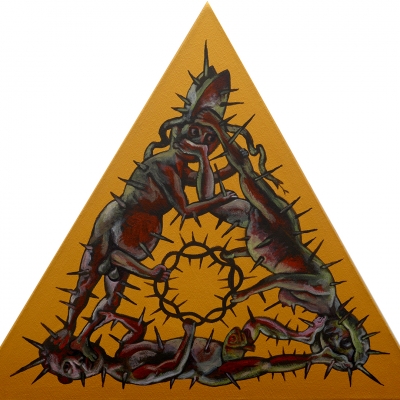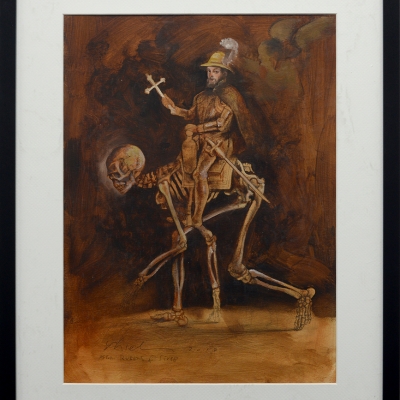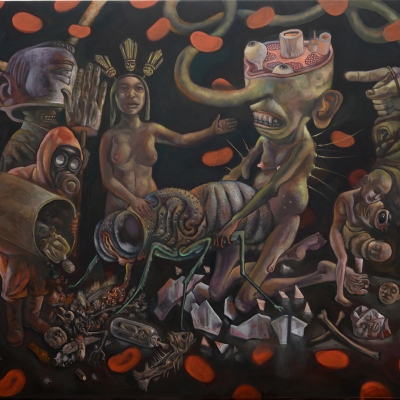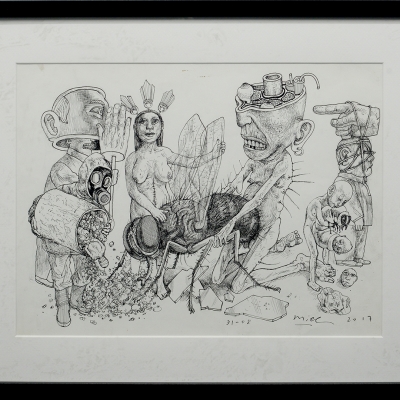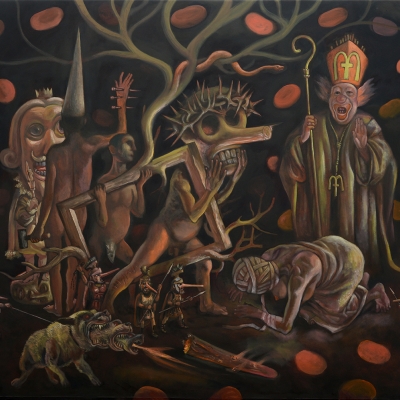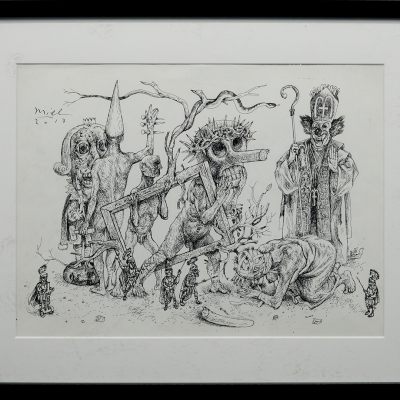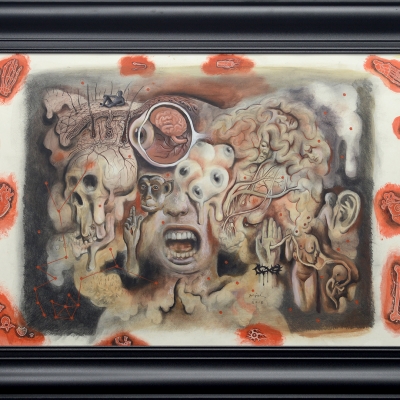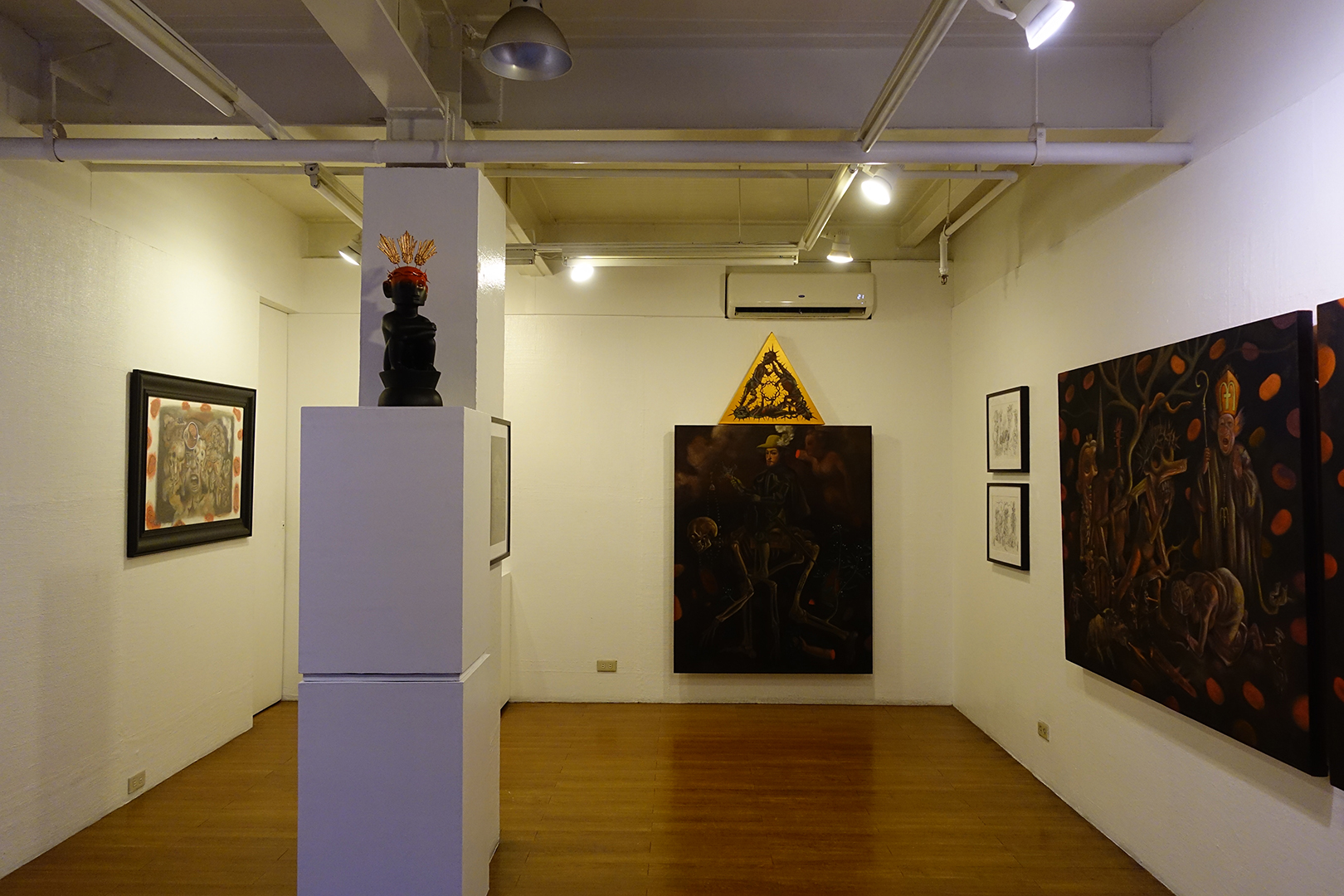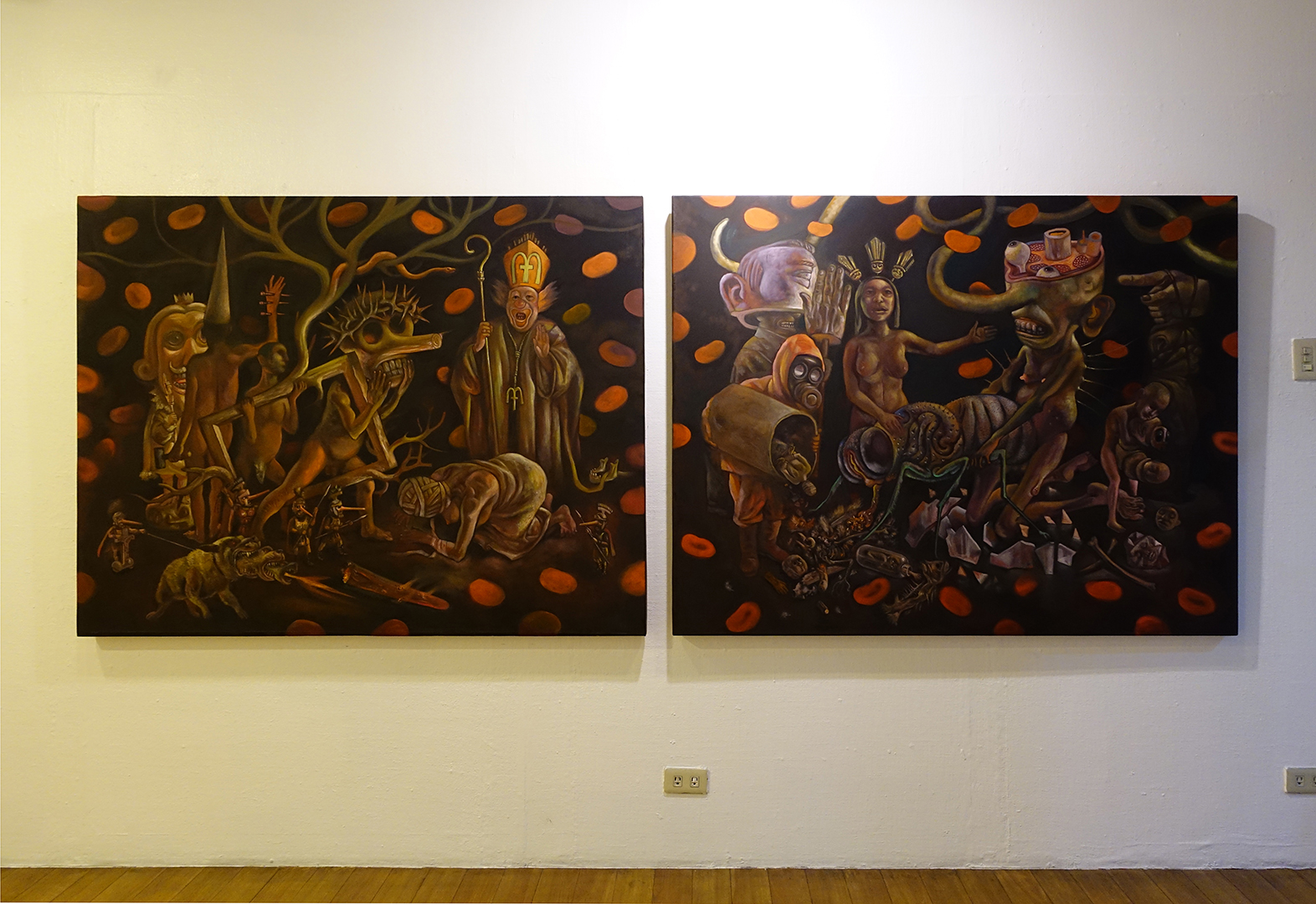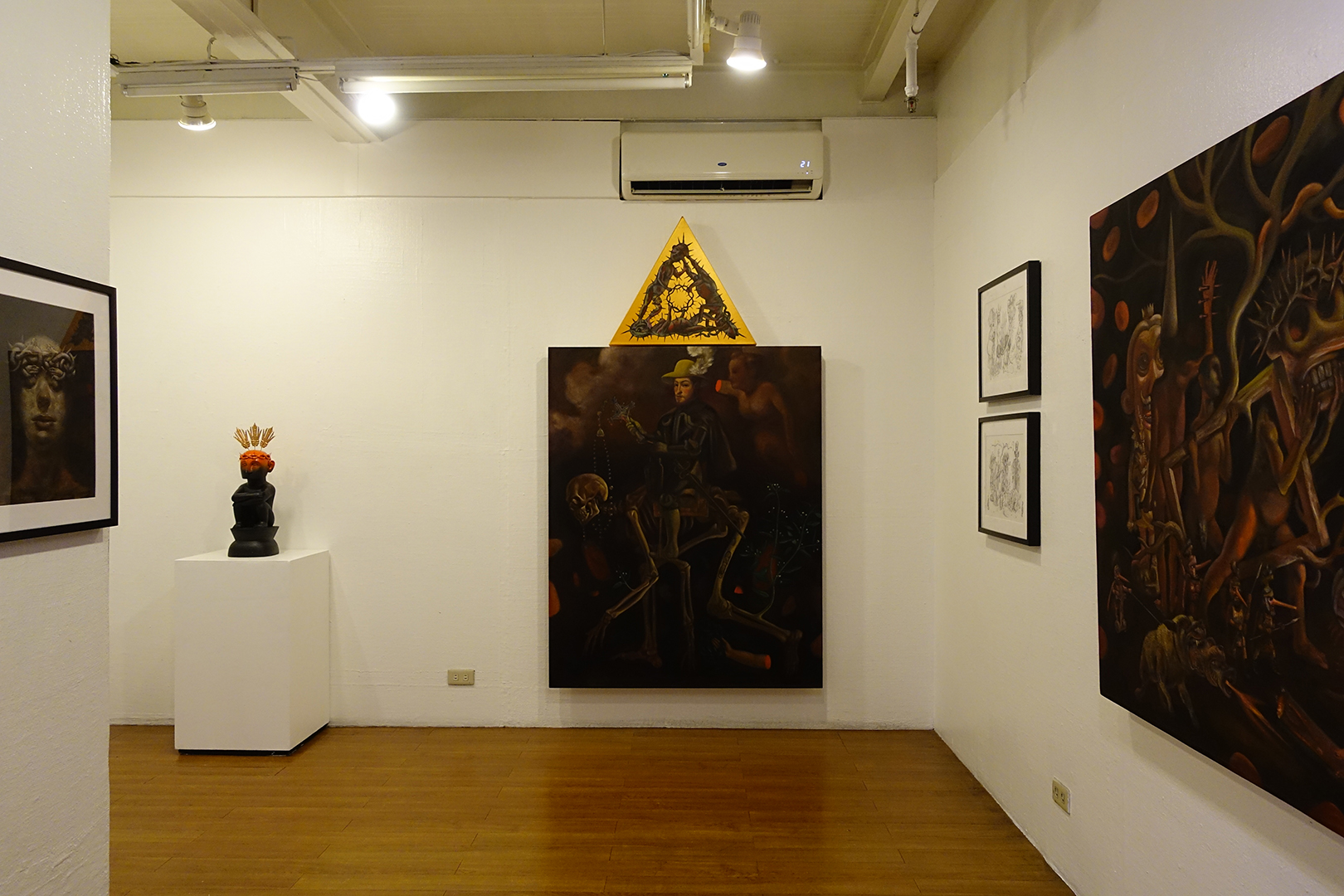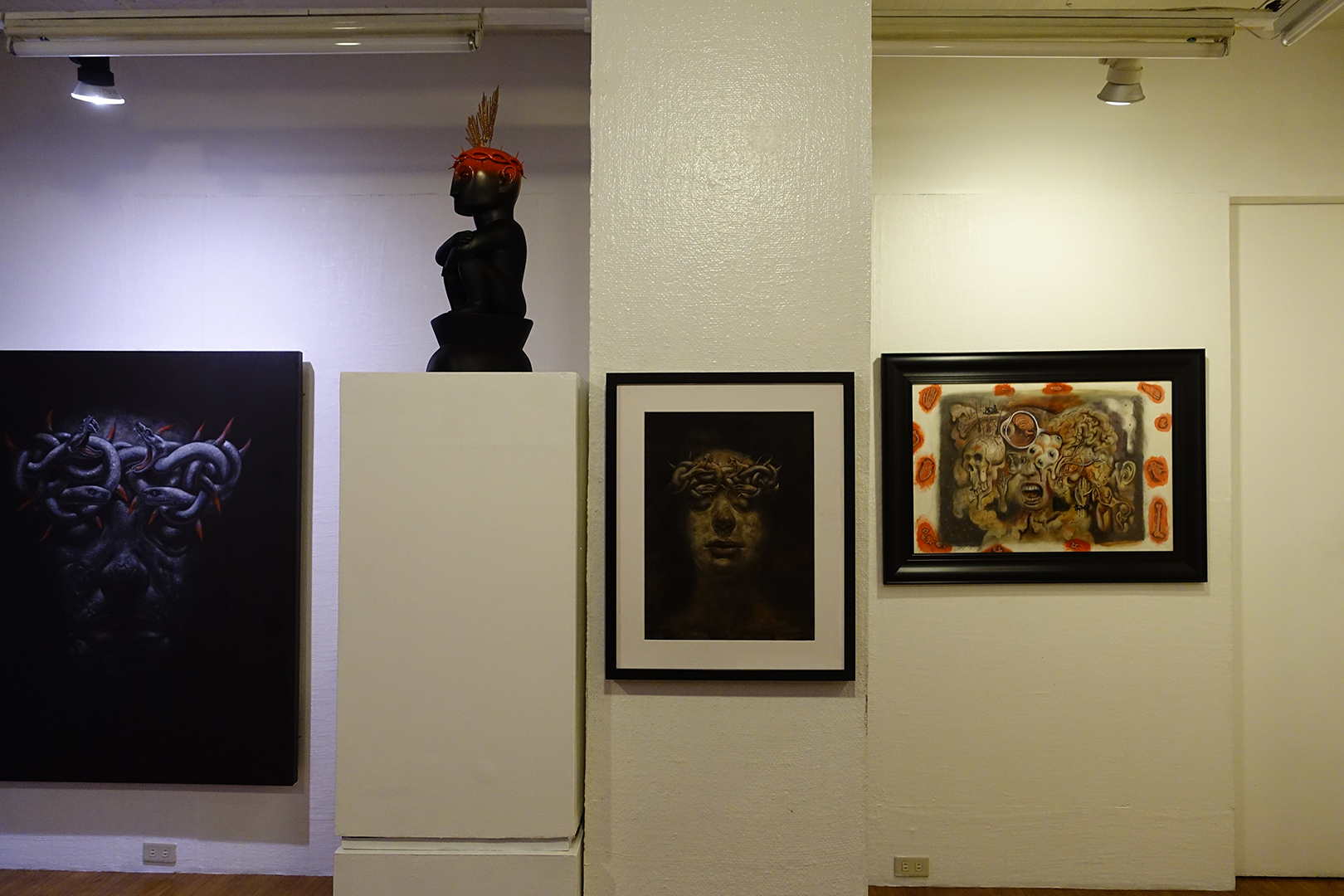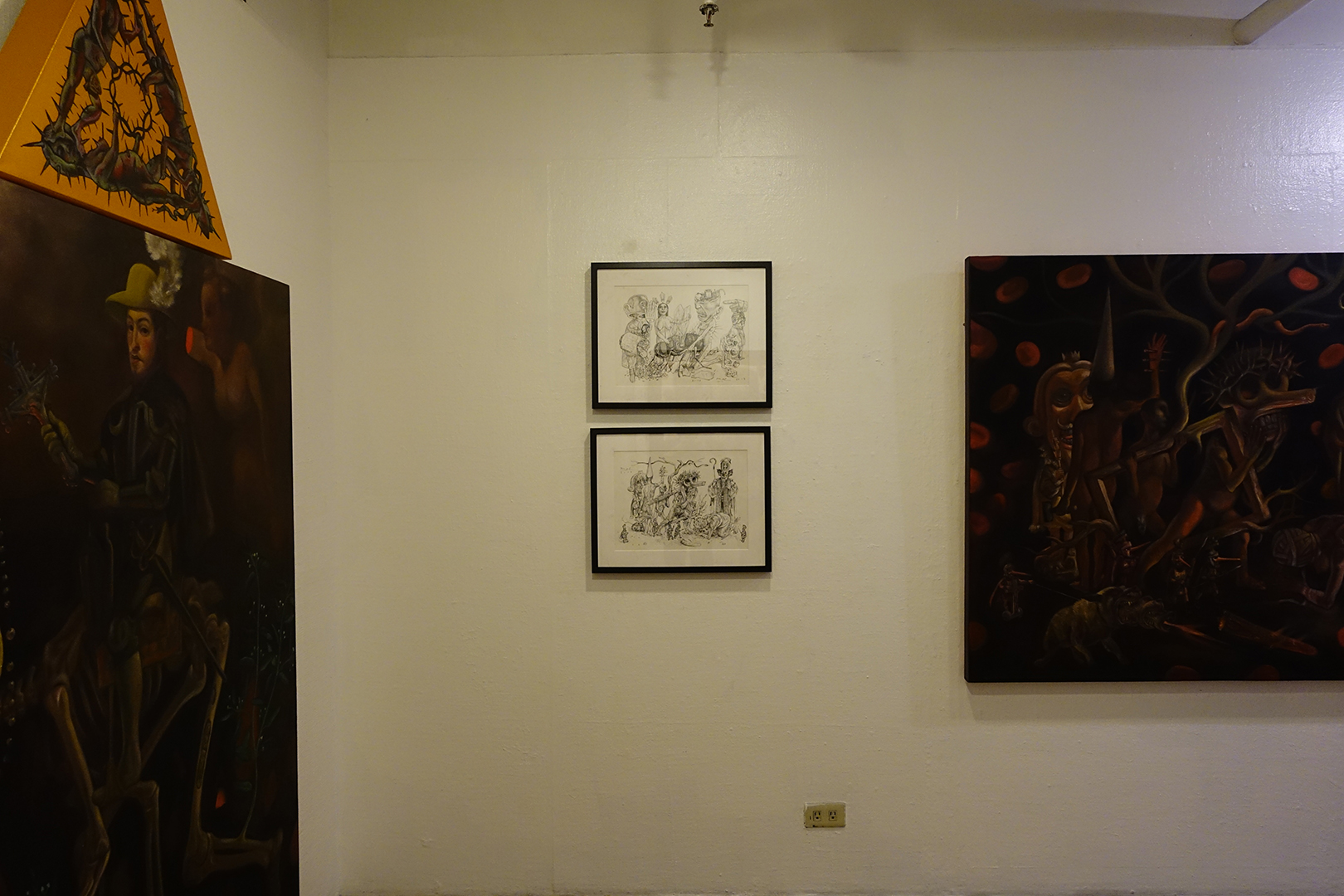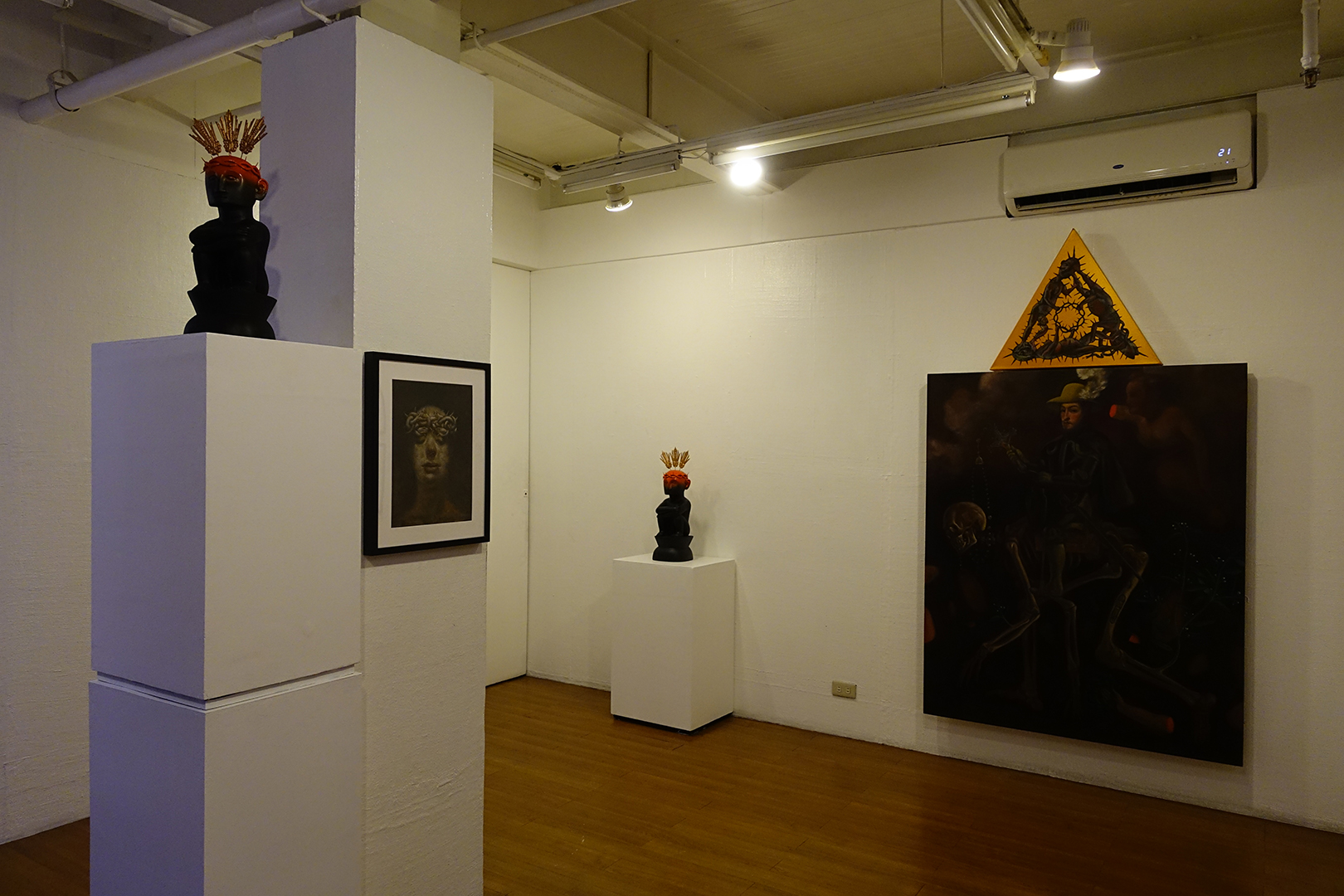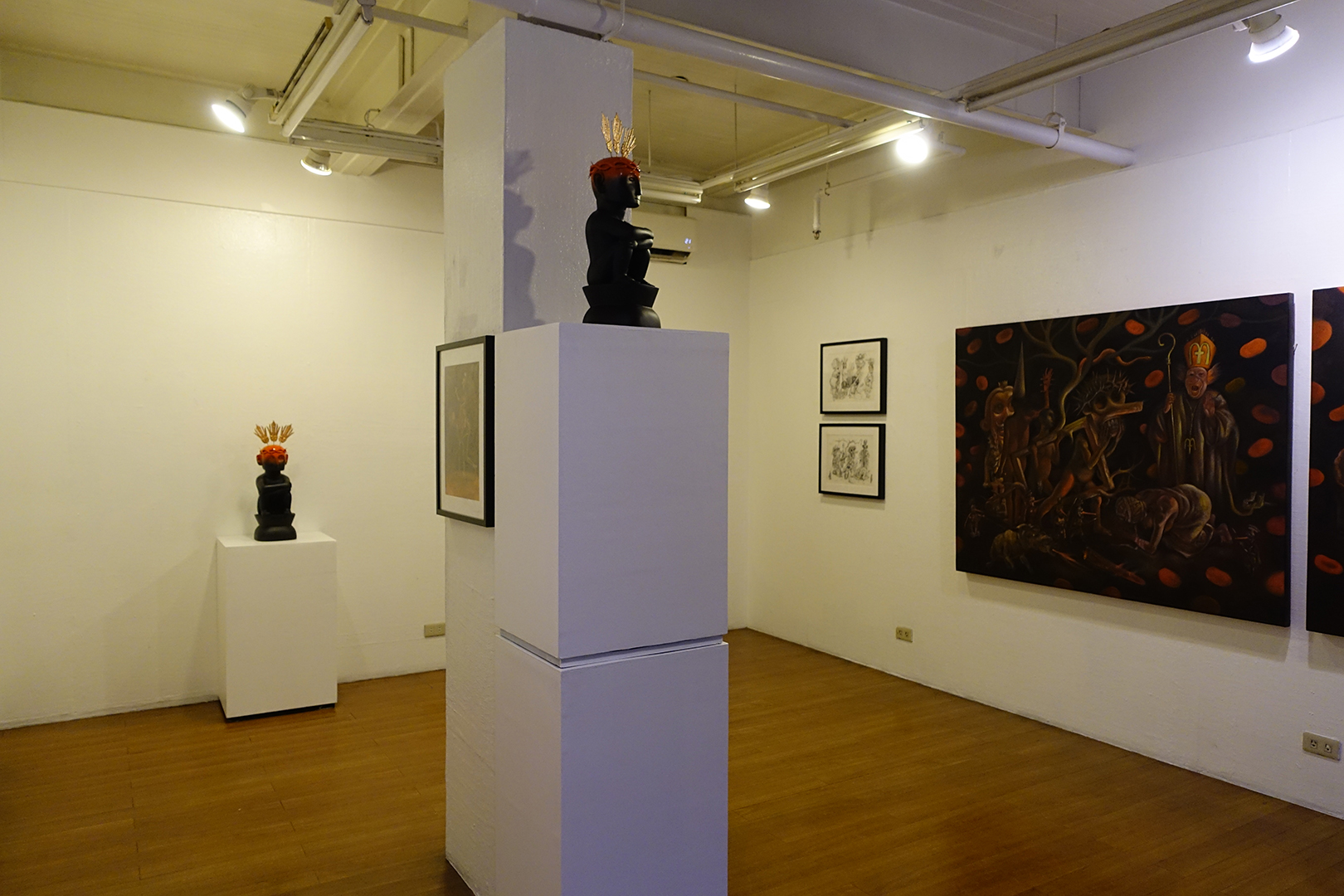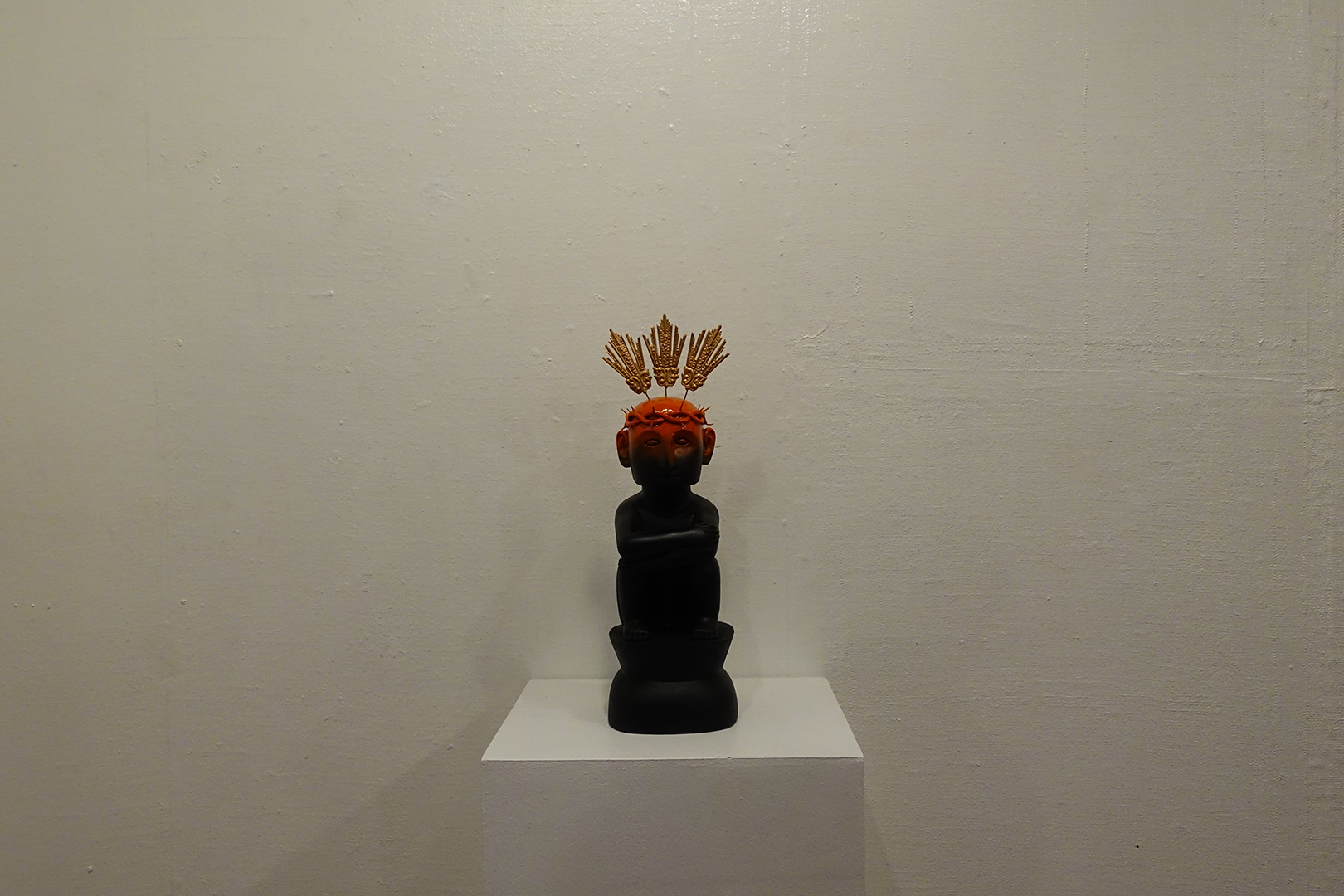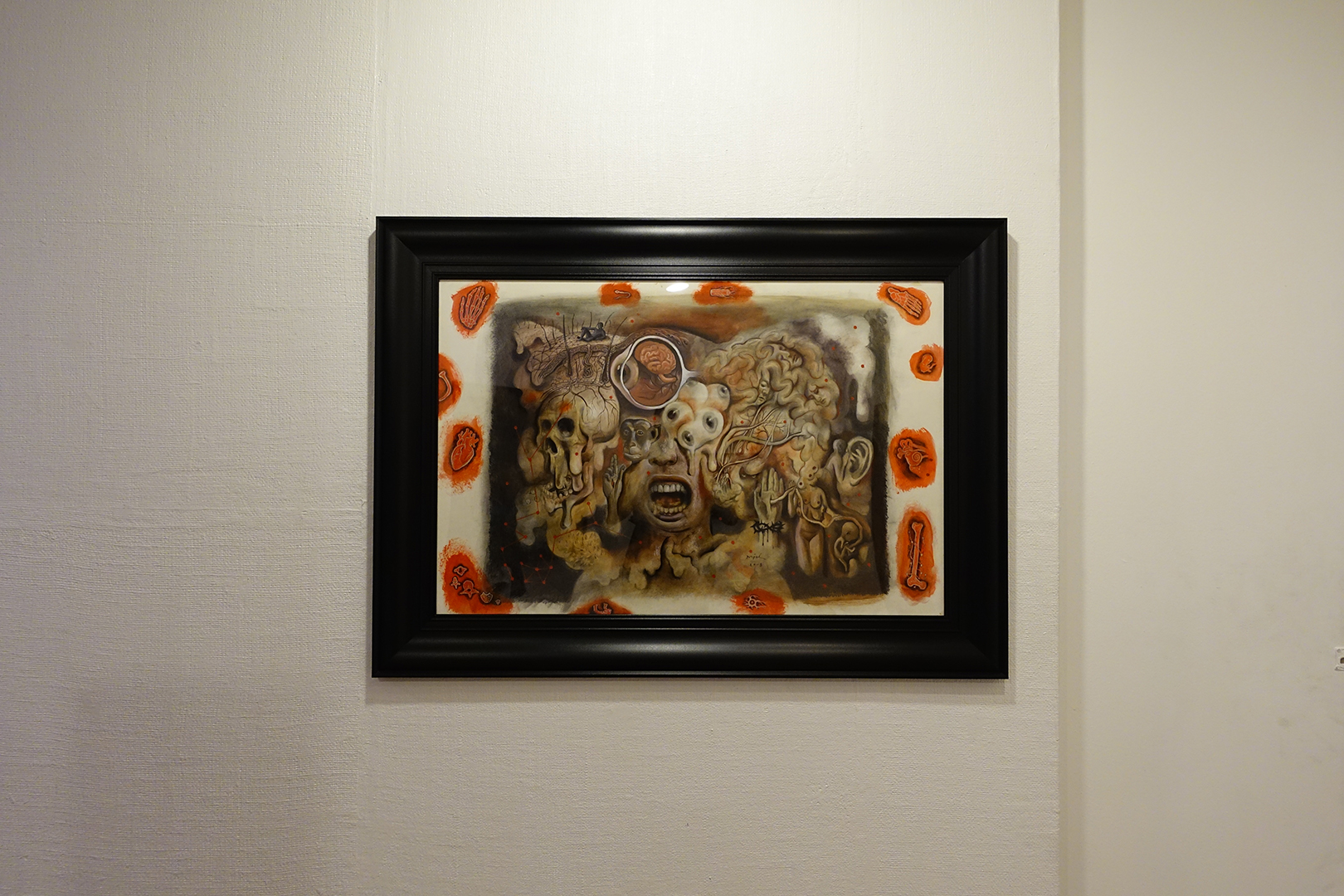Corpus is the word and the world. It is the body in which Dengcoy Miel prospects for a new language from old languages that perform autopsy on the postcolonial carcass over and over again. The new language wants to think that there are promises to be made from decay, that the sequence of inherited permutations in public history and individual legacy demand new ways of thinking for future histories.
It is necessary to locate this new exhibition that succeeding Miel’s previous solo show Philippine Barouke. That solo exhibition presented us with a cast of characters, manufactured by the syncretism of culture that came about by the tumbling of our empirical histories by different colonial enterprises. Philippine Barouke posits a sensibility of a certain generation of artists having lived through and survived the damages inflicted by a kleptocrat’s promises. That sensibility built the iconography of realism, framing direct allegories with a dark humour. Decay was a function for hope, and decay was immediate and illustrative. King Philip II has a face as distinct as the papacy that gives us today our daily (fastfood) bread. Machismo was a stamp that punctures our bodies as much as the trauma of our traffic jams.
In Corpus, Miel consolidates this visual language that was tested in Philippine Barouke. What was experienced to be broken down in their singularity proposed that the tests of creativity to discover permutations. It is natural to our inherited cultural conditions to identify the fragmentations that we embody. Corpus then proposes that the tableaux is more than the syntax of these contents. The narrative is rhizomatic – there are new promises that have been propagated. A crucifixion indicates nothing but our framing to the origins of our temptations. The chimera is also a hydra, multiplying the heads of gatekeepers of our history. The trinity is an ouroboros of claiming a crypto-christianity. The veil of Veronica inquires what it means to be iconic (vera – icona). This embodiment of a suite of works is a bricolage into the optics of history. The rhythm we see in Corpus questions the behavior of power, its frequencies into our living futures, and how long has it has taken before decay, and promises, reflect finally as an image.
Sidd Perez
April 2018

